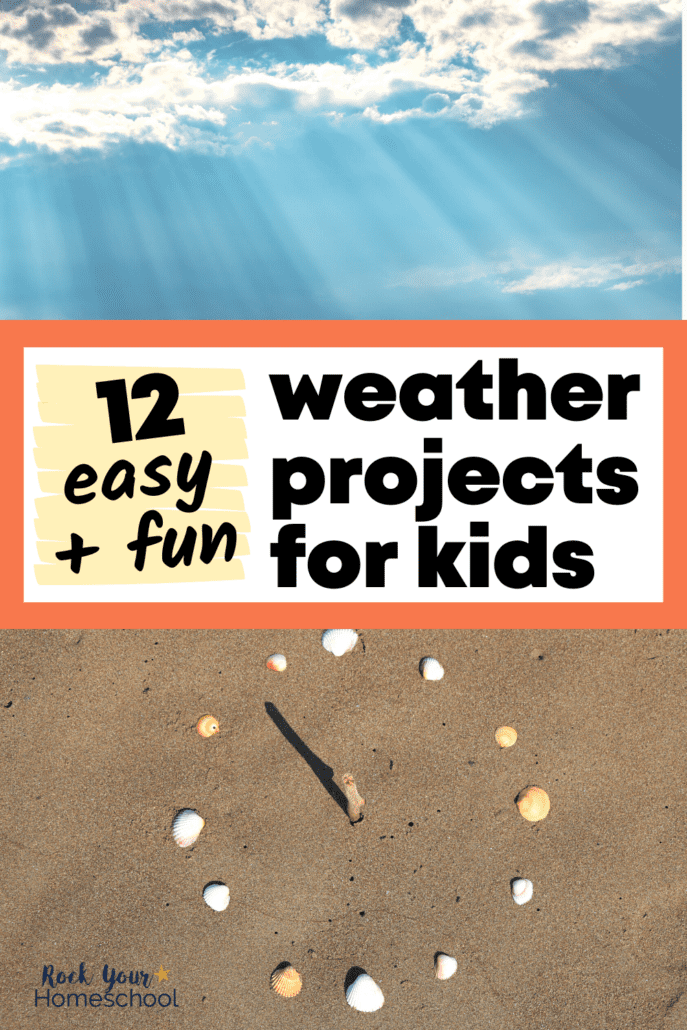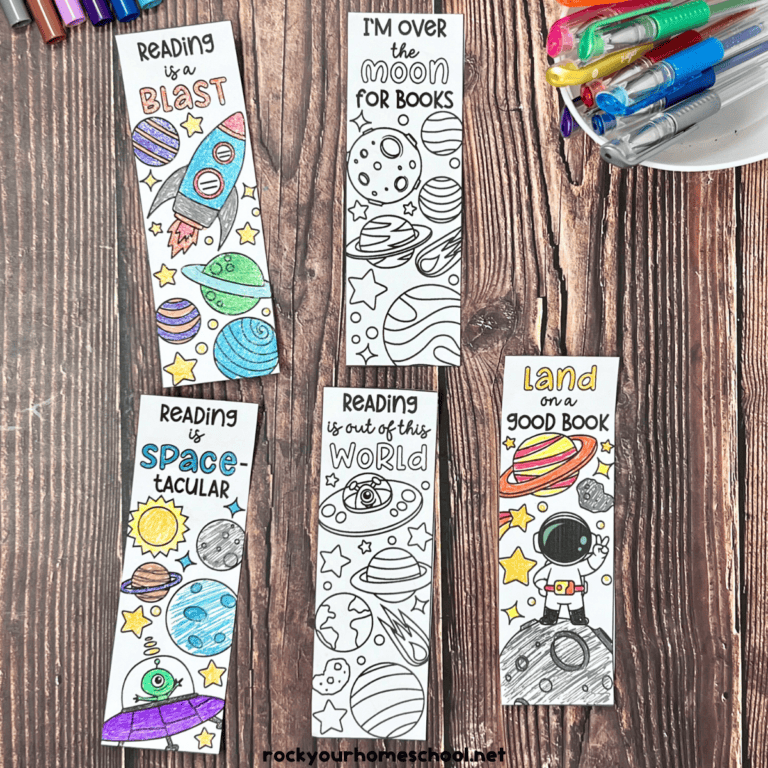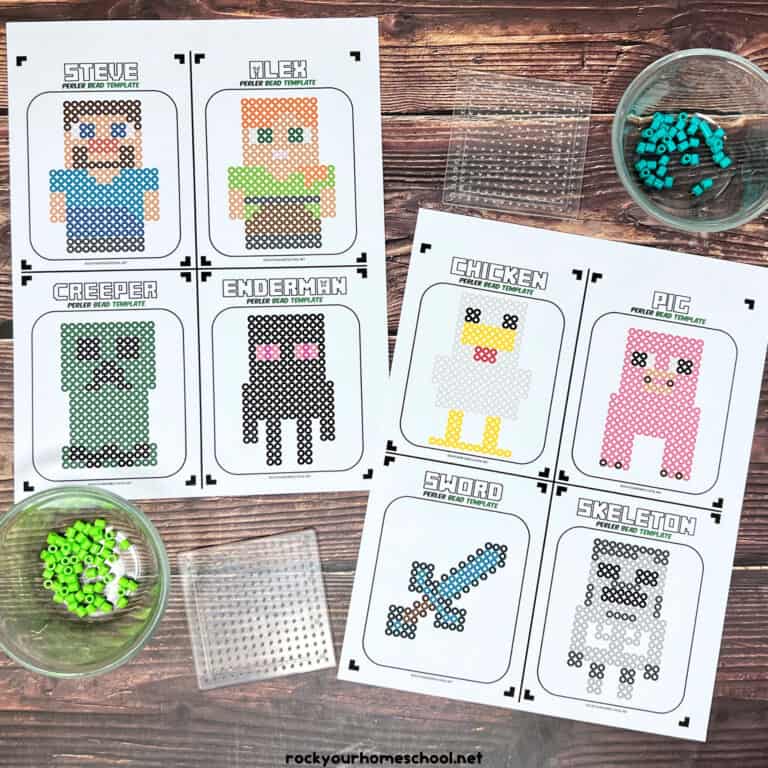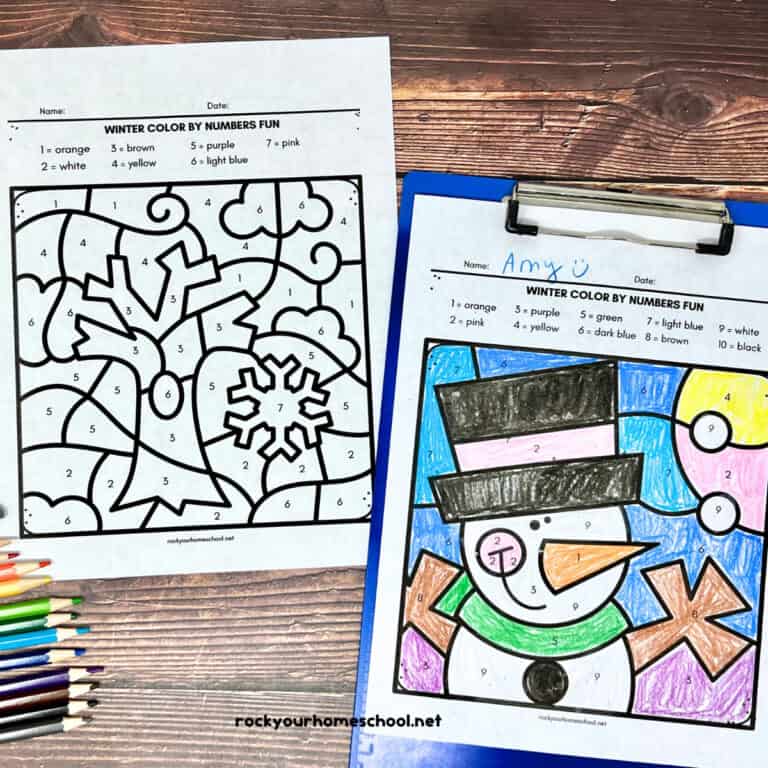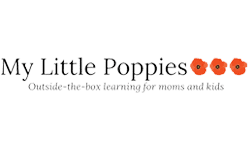Weather projects for kids are excellent ways to take your science fun to the next level.
These 12 projects that are easy to get started and require minimum supplies. Your kids will have a blast with these hands-on learning experiences.
Easily help your kids learn more about the weather and get creative ideas for enjoying these science projects today!
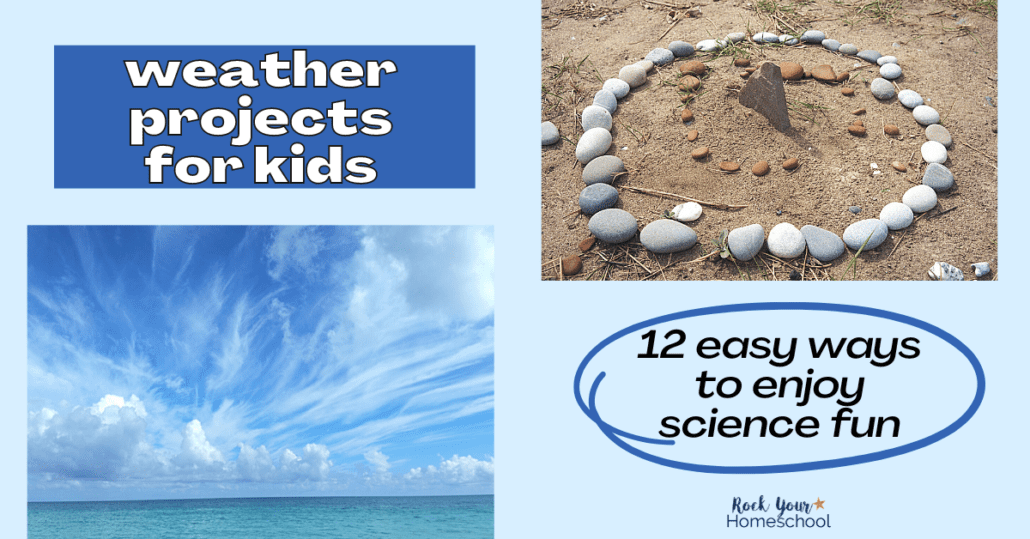
Take Your Science Fun to the Next Level with Weather Projects for Kids
Weather is one of the most fascinating things that kids can learn about. It’s constantly changing and there are so many different aspects to it that can be explored.
And the cool thing is that you can explore the weather in a variety of ways. You can:
- Make observations
- Record changes (like temperature, wind, and more)
- Read about weather concepts, vocabulary, and predictions
- Watch videos about the weather
- Enjoy hands-on experiments and projects
- Write and draw about all that you learn about the weather!
If you’re looking for a way to keep your child entertained and engaged while also teaching them about science, then these 12 weather projects are perfect for you!
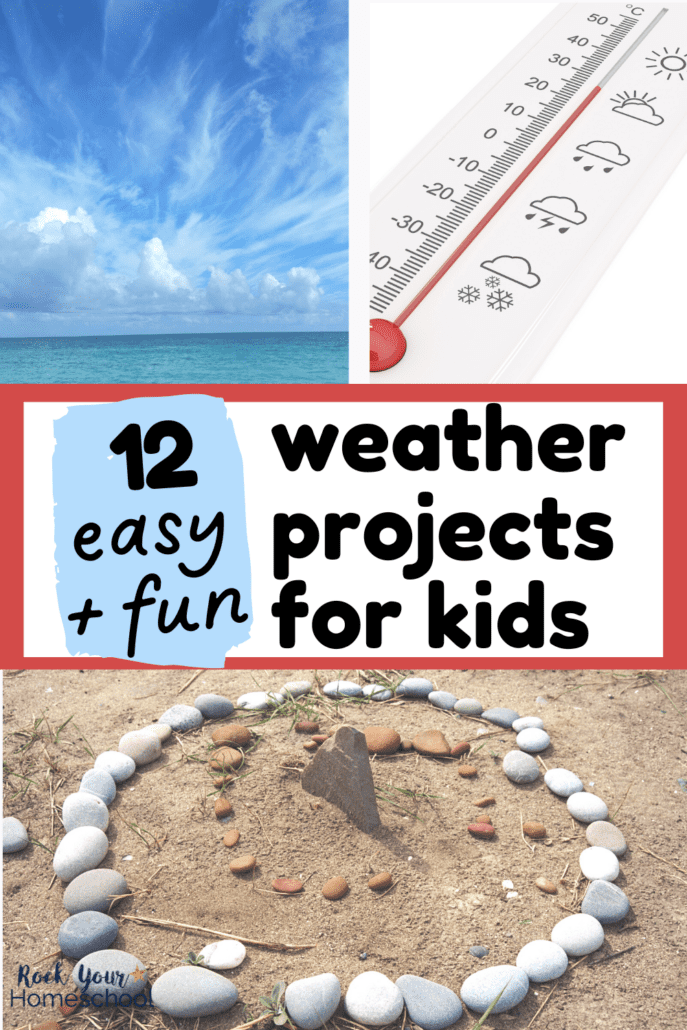
12 Super Cool Weather Projects for Kids
Get ready for some outstanding learning fun with these weather projects for kids!
I recommend talking about each of these projects with your kids and make a list of which ones you’d like to do first. You might need to consider the season of the year as you make your choices.
1. Make a Rain Gauge
One of the most basic weather instruments is a rain gauge. By making your own, your child can learn how to measure precipitation levels and track changes over time.
All you need is a clear plastic container, some tape, ruler, and a permanent marker.
Simply mark the container in increments of inches or millimeters. Then, place it outside in an open area. Check it every day to see how much rain (or snow) has fallen and record your findings in a notebook or on a graph.
2. Build a Barometer
A barometer is an instrument that measures atmospheric pressure. This project is a little more advanced than the rain gauge, but it’s still a great way for kids to learn about how weather works.
You’ll need:
- glass jar
- rubber stopper that fits snugly in the mouth of the jar
- a balloon
- clear tape.
Stretch the balloon over the top of the jar and secure it with the tape. Then, place the rubber stopper in the mouth of the jar. As the atmospheric pressure changes, the balloon will inflate or deflate, giving you a reading on the barometer.
3. Study Clouds
Clouds are one of the most fascinating aspects of weather, and they come in all sorts of shapes and sizes. There are 10 different types of clouds, like:
- Cumulus clouds (look like fluffy white marshmallows)
- Altocumulus (middle high that are small, white, and puffy)
- Nimbostratus (thick, dark gray around middle high)
- Stratocumulus (low, puffy, and gray)
- Stratus clouds (low, flat, and gray)
- Cirrostratus (high and flat)
- Altostratus (medium high with dark gray)
- Cirrus clouds (thin and wispy)
- Cirrocumulus (high and look like tiny cotton balls)
- Cumulonimbus (very tall)
Have your child spend some time outside observing the clouds. Then, help them to identify the different types. You can also use a book or an online resource to learn more about the science behind clouds.
The Book of CloudsExplore My World CloudsThe Cloud BookKnow Your Clouds (Old Pond Books) Learn How to Read the Skies and Identify Each Type of Cloud, Learn How Clouds are Formed, How They Indicate the Weather, the Optical Phenomena They Produce, and MoreClouds (Let’s-Read-and-Find-Out Science 1)
4. Make a Wind Vane for Weather Projects for Kids
A wind vane is an instrument that tells you which direction the wind is blowing. You can make your own with just a few household materials. All you need is a piece of cardboard, a straw, some tape, and a marker.
Cut the cardboard into the shape of an arrow. Then, attach the straw to the center with tape.
Place the wind vane outside and watch as the arrow points in the direction that the wind is blowing.
5. Create a Water Cycle in a Bottle
The water cycle is the process by which water moves from the earth’s surface to the atmosphere and then back again.
You can create your own mini-water cycle in a bottle with just a few simple materials.
All you need is a clear plastic bottle, some water, and some blue food coloring. Add the water and food coloring to the bottle and screw on the lid. Place it in a sunny spot. Watch as the water evaporates, condenses, and precipitates, and then starts the cycle all over again.
You can use our free water cycle activities pack to extend the science fun!
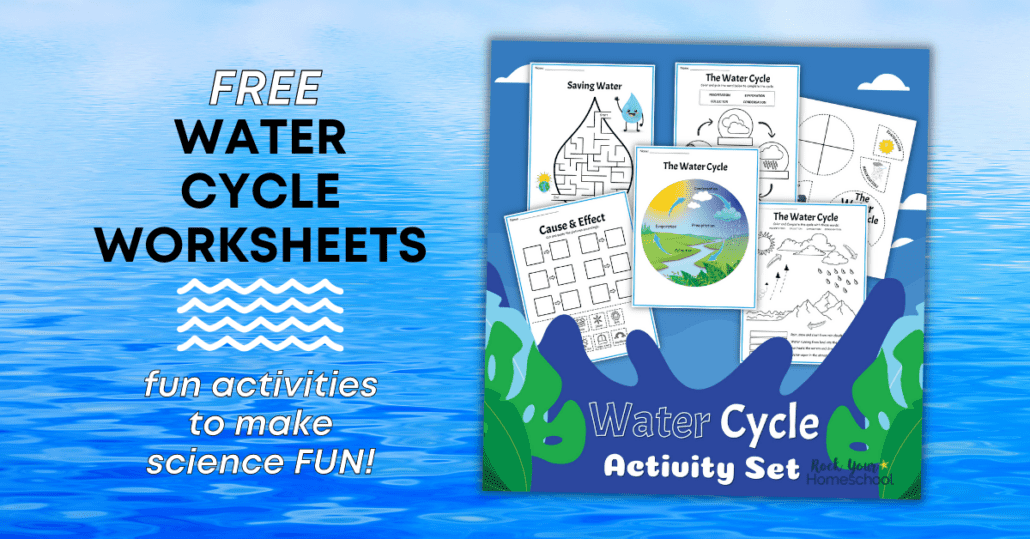
6. Build a Sundial
A sundial is an ancient instrument that was used to tell time by tracking the position of the sun in the sky.
You can make your own sundial with just a few household materials. All you need is a plastic cup, a straw, a piece of cardboard, and some tape.
Poke a hole in the center of the cardboard and then thread the straw through it. Tape the straw to the inside of the cup so that it’s pointing straight up. Set the cup outside in a sunny spot.
As the sun moves across the sky, the shadow of the straw will move on the cardboard, allowing you to tell time.
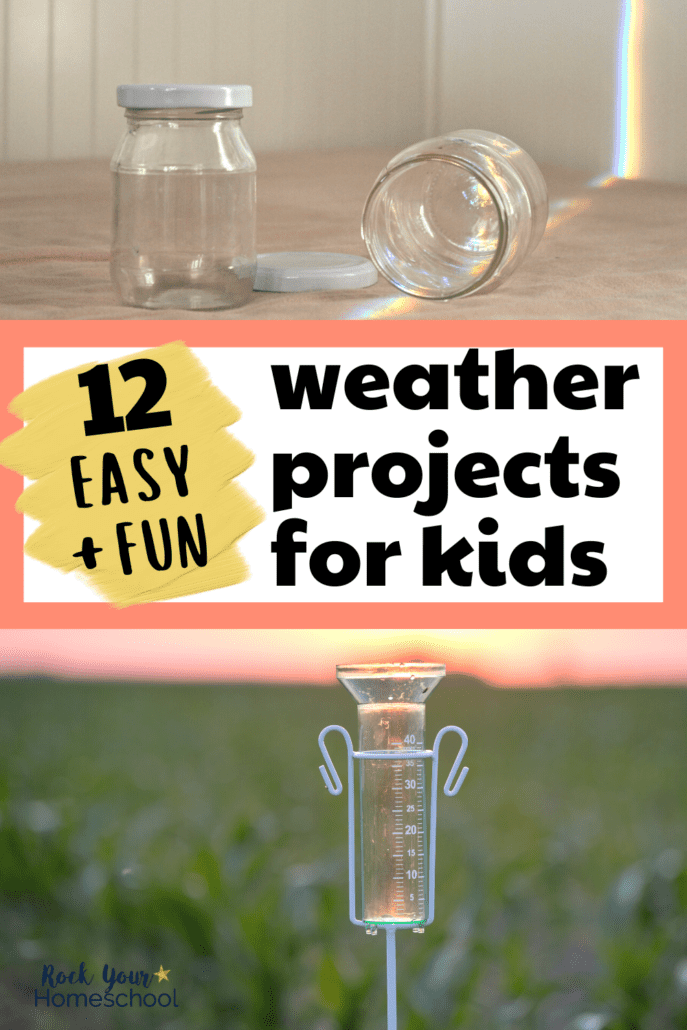
7. Experiment with Evaporation
Evaporation is the process by which water turns into vapor. You can experiment with this weather phenomenon by filling a bowl with water and then placing it in a sunny spot. Observe the water over the course of a few hours, and see how much of it has evaporated.
You can also experiment with different temperatures to see how they affect the rate of evaporation.
8. Make a Thermometer for Your Weather Projects for Kids
A thermometer is an instrument that measures temperature.
You can make your own thermometer with just a few simple materials. All you need is:
- glass jar
- rubber stopper that fits snugly in the mouth of the jar
- balloon
- clear tape.
Stretch the balloon over the top of the jar and secure it with the tape. Place the rubber stopper in the mouth of the jar. As the temperature changes, the balloon will inflate or deflate, giving you a reading on the thermometer.
9. Make Rainbows
Rainbows are one of the most beautiful aspects of weather and they’re very easy to make. All you need is a glass jar, some water, and a sunny spot. Fill the jar with water and then place it in the sun. As the sun shines through the water, it will create a rainbow.
You can also have a blast with these 5 ideas for diffraction grating!
11. Make Sun Prints
Sun prints are a fun and easy way to experiment with the science of light. All you need is some dark construction paper, a sunny spot, and objects to use as stencils (leaves, flowers, etc.).
Place the paper in the sun and then arrange your objects on top of it. The sun will cause the paper to darken around the objects, creating a negative image.
You can also use special paper created to make sun prints
Sun Art 4×6 Paper KitCsyidio Cyanotype Paper,32 Pcs A5 Sun Print Paper Kit,High Sensitivity Sun Print Nature Printing Paper Solar Drawing Paper(5.8 x 8.3 Inch)LIMOON Colorful Sun Print Paper Kit, 24 Sheets Thick Cyanotype Papers with 1 Sheet Acrylic Panel, High Sensitive Nature Sun/Solar Activated Printing Art for Arts Crafts DIY Project, 6 ColorsTedco 8
12. Track the Weather
One of the best ways to learn about the weather is to track it yourself.
You can do this type of weather activity by keeping a log of the temperature and precipitation each day. You can also track other aspects of the weather, such as wind speed and direction, cloud cover, and barometric pressure.
This free printable calendar notebook activities pack has pages that you can use to get started tracking the weather.
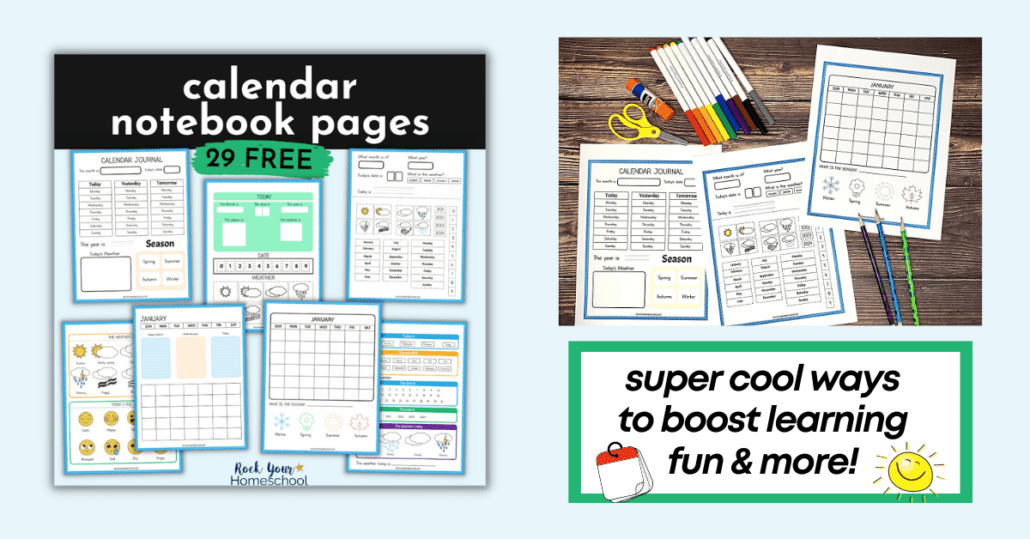
The science projects about weather for kids we’ve provided are a great way to introduce children to the basics of meteorology. They can experiment with different aspects of the weather, learn how to track it, and create their own rainbows and sun prints.
Which of these suggestions your favorite weather projects for kids? Let us know in the comments below.
